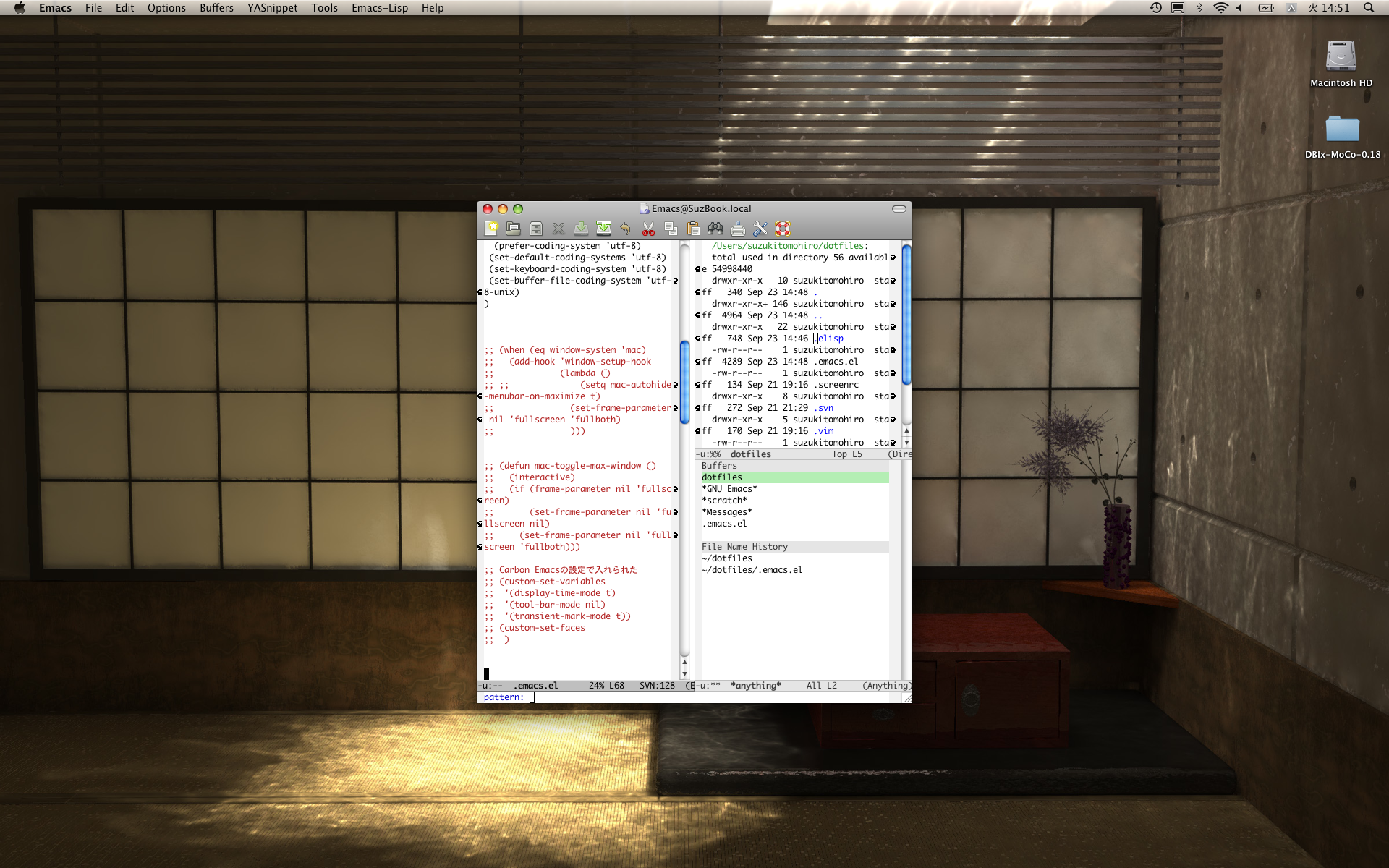Prebuilt Carbon Emacs For Mac 3,8/5 6025 reviews
Install the right Emacs Install the latest release of (24.1 as of this writing). Not XEmacs, not EmacsW32, not AquaMacs, not Carbon Emacs. Linux Emacs is probably already installed; if not, use your distro’s package manager (yum, apt-get, etc). If your distro only has older Emacs packages, you could try finding a third-party package repository, or if you are comfortable doing so. OS X If you use, install the emacs-app port, which gives you a native OS X application. By default macports will install Emacs.app into /Applications/MacPorts. If you use a laptop I recommend the fullscreen variant (i.e.
Port install emacs-app +fullscreen) which adds the command ns-toggle-fullscreen to Emacs. If you use: brew install emacs -cocoa.
Otherwise, you can use a, but do consider installing macports or homebrew so that you can easily install other Unixy tools as you need them. Windows You are mostly on your own as I am not a Windows user; I apologize in advance if some of the examples in this guide don’t work on your system, as I haven’t tested on Windows. You’ll want to download the latest emacs-xx.x-bin-i386.zip from and unzip it into a directory of your choice. Then run addpm.exe from the bin subdirectory, as an administrator (this adds a start menu shortcut and various registry entries).
Some Emacs functionality requires Unixy tools like find and grep, which you can get by installing a posix emulation environment such as. You will have to ensure that the posix utilities are on the system PATH so that Emacs can find them. For further help refer to the and the (often outdated). Remove any existing.emacs configuration If you have existing Emacs customizations in a.emacs file or.emacs.d directory, you should move it out of the way if you want your Emacs behavior to exactly mirror the examples in this guide.
Emacs Mac Port
Hi all, After a couple of years of not using Emacs, I decided to use it again mostly for nostalgic reasons (yeah. I used to use it in my Freshmen + Sophomore year). I downloaded and installed Carbon Emacs from the following site:. Strangely, the /.emacs file is not there. There is however, a similar file (carbon-emacs-init.el) I found in /Applications/Emacs.app/Contents/Reosurces/site-lisp/site-start.d/ What is the difference? Anyway, I have never done any customizations on Emacs.
Do all customizations must be done through /.emacs file or in this case carbon-emacs-init.el? Can I just rename carbon-emacs-init.el to.emacs and save it to my home directory??
Is there any guideline somewhere on the net to write.emacs file? I'll use Emacs primarily for TeX editing (with TeXniscope as the previewer) some Java and C/C. So far, Carbon Emacs is really cool. Thanx for all the help!!!! Click to expand.So, I guess they're probably the same thing, although I think init.el is executed first BEFORE /.emacs (please correct me if I'm wrong). I would like to have a customized environment for LaTeX, such as having preview-latex, synching with external pdf previewer, etc.
I also would like to know if there is a way to change the buffer's transparency (looks really cool). Unfortunately I already edited carbon-emacs-init.el, so I'll try to restore it, and create a new /.emacs.

By the way khammack, which version of Carbon Emacs are you using? I would like to try Aquamacs, but I guess it's not a fully developed product yet, and some packages may not work. I don't really like (X)Emacs that uses X11.
So I'll just stick with the Carbon Emacs for now. I was originally using emacs on aqua: Edit: And for the record, even though it was based on an older version of emacs I preferred it over the carbon emacsen I tried. But when I upgraded to Tiger it quit working properly.
Pre Built Carbon Emacs For Mac
Can't remember the issue, but I ultimately went back to this one: Which works fine. You should either do all of your customizations from.emacs, or if you plan to get crazy (as I have) create a /elisp directory for.el files that you have downloaded (or written) to reside. For example, in my.emacs: (add-to-list 'load-path '/elisp') (load 'kevin-custom') Then, I have a file called '/elisp/kevin-custom.el' which contains some code I wrote to extend emacs. TeX mode should be already on by default for you, you can tell by opening a LaTeX file and checking that the modeline reads (TeX). If you see this but no syntax highlighting, put this in your /.emacs file: (global-font-lock-mode t) (setq font-lock-maximum-decoration t) A few other nice ones: (transient-mark-mode t) (show-parent-mode 'true) (line-number-mode t) (column-number-mode t) You can get oriented here: But emacs is 'self documenting' so you can also discover everything from within emacs itself.
Install Emacs Mac
M-x helpRET Or, if you have a function or variable and want to know more about it: M-x describe-functionRET show-paren-modeRET M-x describe-variableRET font-lock-maximum-decorationRET Also, if you have a.el file you've downloaded and want to load, often instructions are included in the comments at the top of the.el file for enabling whatever goodness it may contain.